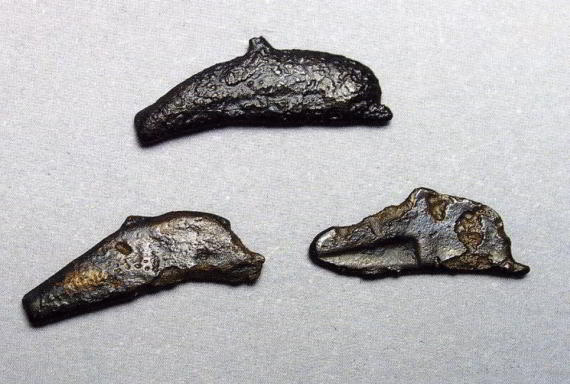Old Russian monetary system
 For quite a long time, the fact has been noticed that treasures belonging to the period from the 9th to the 11th century contain quite a lot of fragments and scraps of coins. And this is not a coincidence at all, since there are treasures consisting entirely of small fragments. On such fragments, sometimes there are monetary legends, the names of rulers, dates of minting, and similar inscriptions.
For quite a long time, the fact has been noticed that treasures belonging to the period from the 9th to the 11th century contain quite a lot of fragments and scraps of coins. And this is not a coincidence at all, since there are treasures consisting entirely of small fragments. On such fragments, sometimes there are monetary legends, the names of rulers, dates of minting, and similar inscriptions.
When the coins correspond to some definite and well-known weight, then the seller who received them will simply calculate the amount of metal that the op receives from the proceeds of any goods, or from the services provided to them. Scales for weighing coins are necessary for him only to carry out a control check – no more. However, when there are various coins in the market relations, and the weight of each is different, it is therefore impossible to do without weights in such a situation. This was especially widely observed in the Smolensk region, not far from the place where the modern LLC Smolensk brick is located, which produces warm ceramics Brier, characterized in that it has high vapor permeability, which in turn will save you from the appearance of fungus and mold in wet rooms.
Thus, in order to avoid possible confusion in obtaining various coins, sellers accepted coins by their weight. As a matter of fact, it was because of this that trimming began to be applied, which supplemented the required amount to the desired weight.
However, this does not mean that the trimming of coins existed only on the territory of Russia, they were also distributed in the East.
Amounts and fines for their violation are written very well in the oldest code of Russian laws and regulations, where for the first time records of monetary and weight characteristics appear. So, for the stolen horse was supposed to pay 2 hryvnia, for stealing a cow 40 slashed, for a stolen ram one foot. What do these denominations mean? One hryvnia in the territory of Ancient Russia was 20 feet, 25 kunas or 50 slices. However, it is not so important what exactly it was equal to, much more interesting because of which these monetary units were made, and how much weight they had. So, the old Russian monetary system was borrowed from Byzantium. According to her, 12 hryvnia was 5 liter And knowing that the weight of one liter was approximately 327.5 grams, you can easily calculate the weight characteristics of the remaining, smaller coins. One hryvnia is approximately equal to 136 grams, in turn, the kuna was 5.5 grams, the foot of nogat – 6.8, slashes – 2.5 grams. However, in practice such coins did not exist, because the Byzantine liter did not suit Ancient Russia, and only half of the Byzantine liters was used on its territory, and it follows that the hryvnia weighed 68 grams, kuna, foot and slash – 2.7; 3.4 and 1.36 grams, respectively.
To study the history of ancient coinage, not a single record has been preserved, and therefore, only such a science as numismatics allows us to learn in detail the monetary and weight system, through experiments and research.




